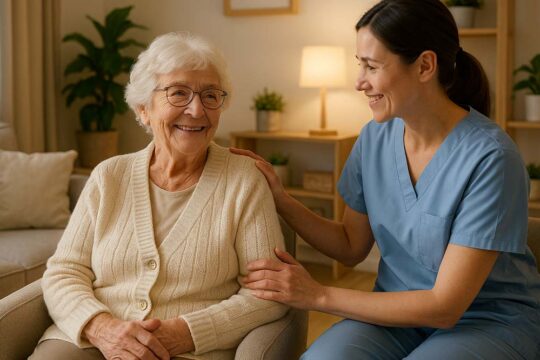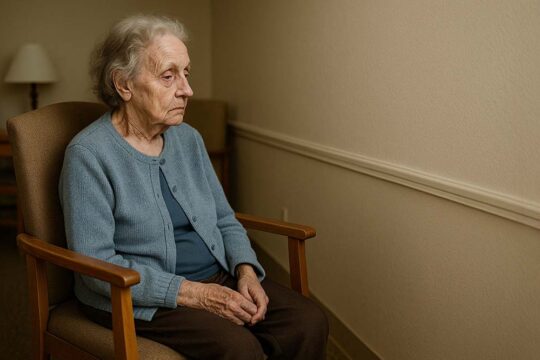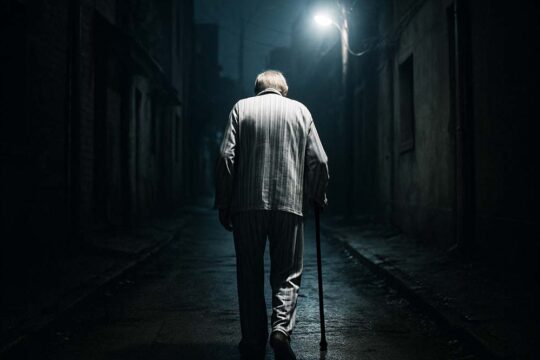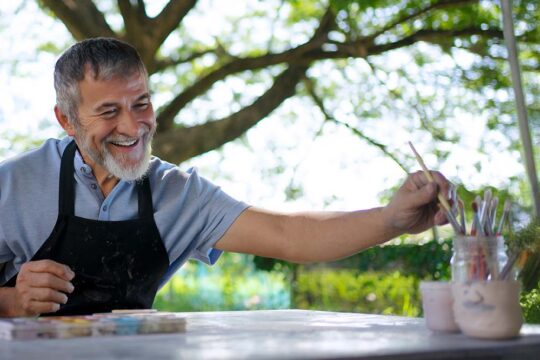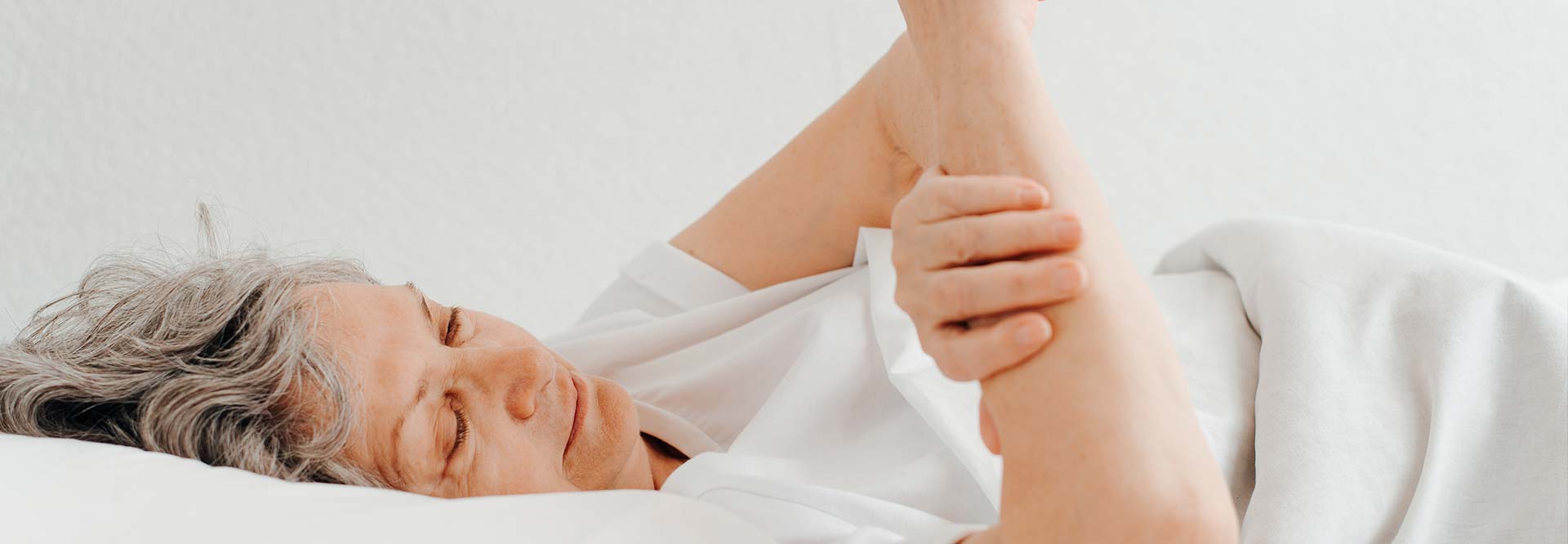
Skin Breakdown in Elderly: Causes & Prevention
How to Deal with Skin Breakdown in the Elderly
Skin breakdown is a significant concern in elderly care and poses risks of pressure ulcers, infection, and serious complications. Symptoms, varying from redness and swelling to open sores and infections, highlight the skin’s increasing vulnerability with age. Early detection and preventative strategies are important for managing and preventing this condition.
What is skin breakdown?
Skin breakdown refers to the deterioration of skin integrity, resulting from prolonged pressure, friction, shear, moisture, or a combination of these factors. Skin breakdown in the elderly often happens in those who are bedridden, use wheelchairs, or are unable to change positions independently, making them susceptible to pressure ulcers or bedsores.
Skin breakdown can also occur under medical devices, due to incontinence (leading to moisture-associated skin damage), or as a side effect of certain medical conditions affecting skin health. The process can lead to open wounds, infections, and other serious complications when not properly managed.
What are the symptoms of skin breakdown in the elderly?
The breakdown of skin in elderly people manifests in symptoms reflecting the deteriorating condition of the skin, due to their increased vulnerability from reduced mobility, thinner skin, and underlying health conditions. Symptoms may include:
- Redness or Discoloration: Persistent redness in lighter skin or purple/brown discoloration in darker skin, especially over bony areas, is an early sign of pressure injury.
- Swelling: The affected area may become swollen due to inflammation.
- Warmth or Coolness: The skin over the area of concern might feel unusually warm or cool compared to surrounding tissues.
- Pain or Tenderness: Elderly people may report pain or discomfort when the area is touched or pressure is applied.
- Hardened or Softened Skin: The skin may feel firmer or softer than surrounding areas.
- Blisters or Open Sores: In more advanced stages, blisters, open wounds, or sores can appear, indicating significant skin damage.
- Drainage: Wounds may begin to leak fluid, which can be clear, yellow, or green, indicating infection.
- Odor: An unpleasant odor may emanate from affected areas, especially if infection is present.
Prompt recognition and treatment of these symptoms are important to prevent further deterioration and promote healing. Regular skin inspections, maintaining good skin hygiene, ensuring adequate nutrition and hydration, and using appropriate support surfaces are essential in managing and preventing skin breakdown in the elderly.
What does skin breakdown look like?
Skin breakdown can manifest in various ways, depending on its stage, cause, and location on the body. Here’s a general description of what skin breakdown may look like:
Initial Stages:
- Redness or Discoloration: For those with lighter skin, the area may appear red, which does not blanch (turn white) when pressed. In darker skin tones, the area may appear darker than the surrounding skin, purplish, or bluish.
- Slight Swelling: There might be mild swelling around the area.
- Warmth or Coolness: The area may feel warmer or cooler to the touch compared to the surrounding skin.
Progressing Stages:
- Blisters: You may notice the formation of blisters, which can be either intact or ruptured.
- Open Sores or Wounds: The skin may break open, leading to shallow open sores. The wound may look pink or red in lighter skin or darker in pigmented skin.
- Change in Texture: The skin may feel softer or firmer, or may appear shiny or dry.
Advanced Stages:
- Deep Ulcers: The breakdown can progress to deeper layers of skin and tissue, potentially exposing fat or muscle. The ulcer looks deeper and may have a crater-like appearance.
- Necrosis: Tissue in the affected area may die, leading to black or brown discoloration.
- Infection: Signs of infection can include increased redness, warmth, swelling, pain, foul odor, or drainage from the wound.
Complications:
- Eschar: A thick, hard crust or scab may form over the wound.
- Undermining or Tunneling: The wound may extend underneath the skin, creating a tunnel-like wound that is difficult to heal.
Early detection and treatment are essential to prevent progression and promote healing. Regular skin inspections and preventive measures help to manage the risk of skin breakdown, especially in vulnerable populations like the elderly or those with limited mobility.
Common sites of skin breakdown in elderly
Common sites for skin breakdown in the elderly often align with areas under pressure due to limited mobility or constant contact with surfaces. Locations include:
- Sacrum and Coccyx: Highly susceptible for those bedridden or seated for long periods.
- Heels: Vulnerable during extended bed rest without movement.
- Elbows: At risk from leaning or propping up in bed.
- Hips and Buttocks: Bear significant pressure when seated or lying down.
- Shoulder Blades: Prone to pressure sores in bedridden individuals.
- Ankles: Can develop sores from tight footwear or prolonged contact.
- Back of the Head: At risk for those lying on their backs for long periods.
- Knees: Susceptible when crossed or one leg rests on the other.
- Ears: Vulnerable with medical device use like oxygen tubes or glasses.
- Hands: Prone to breakdown from conditions like diabetes or exposure to harsh chemicals.
To mitigate risk, use preventive strategies like regular repositioning, use of specialized support surfaces, maintaining skin hygiene, and ensuring proper nutrition and hydration. Early skin checks are vital for effective management and treatment.
What causes skin breakdown in the elderly?
Skin breakdown in the elderly results from various interrelated factors:
- Aging Skin: Thinner, less elastic skin due to decreased collagen production.
- Limited Mobility: Reduced movement leads to prolonged pressure on specific body areas.
- Nutritional Deficiencies: Lack of essential nutrients and hydration compromises skin health.
- Chronic Conditions: Diseases like diabetes and vascular issues impair circulation and skin repair.
- Moisture: Sweat, incontinence, or wound drainage can cause skin maceration.
- Friction and Shear: Skin damage from rubbing against surfaces or shifting positions.
- Medication Effects: Certain drugs, like steroids, thin the skin, reducing its resilience.
- Cognitive and Sensory Impairment: Decreased awareness of discomfort or pain, hindering timely adjustments to relieve pressure.
Addressing these factors through care plans prevents skin breakdown in this vulnerable population.
How do you treat a skin breakdown in the elderly?
Treating skin breakdown in the elderly emphasizes pressure relief, meticulous wound care, and moisture management. Frequent repositioning and the use of specialized support surfaces can alleviate pressure on vulnerable areas.
Wounds should be gently cleaned and dressed with materials that promote healing, taking steps to keep the skin dry, particularly in the presence of incontinence. Nutrition and hydration are important for skin repair, as well as nutritional supplements. In cases of infection, antibiotics are administered.
Pain management, the protection of at-risk skin, and ongoing monitoring of the wound’s progress are essential. Educating caregivers and seniors about skincare and prevention strategies is advised. Consulting with specialists, like wound care experts and dietitians, can enhance the treatment plan, ensuring healing and prevention of future breakdown.
Ways to prevent skin breakdown in elderly
Preventative measures, like regular position changes, maintaining skin hygiene, and using protective barriers, are essential to manage risk and promote skin health.
Transferring an elderly person from their current care facility due to bed sores or skin breakdown may become necessary due to the condition’s severity and the specialized care it demands. Advanced skin breakdown often requires expert wound management, only available in hospitals or specialized centers with expertise and resources for effective treatment. Skin breakdown can escalate into serious complications, including life-threatening infections like sepsis, MRSA, cellulitis, or other illnesses, which need a facility capable of providing intensive care and proper medical intervention.
A transfer allows for a thorough health assessment, enabling a holistic care plan that addresses nutrition, mobility, and underlying health issues with input from wound specialists and geriatricians. Beyond physical health, specialized facilities can better ensure the patient’s comfort, manage pain, and support overall well-being. The decision to transfer should consider the patient’s condition, the facility’s capabilities, and anticipated benefits of specialized care, prioritizing the health and safety of the individual AND the other residents in the facility.
Discover the key differences between retirement homes and assisted living to help you choose the right care for your loved one’s needs.
Learn the risks of leaving a dementia patient alone, legal responsibilities, care strategies, and how to plan for their safety.
Learn why dementia patients wander at night, how to prevent it, and when memory care is the safest option for your loved one in San Diego.
Compare memory care and assisted living, from services and costs to safety and staffing, to find the right senior care in San Diego.
